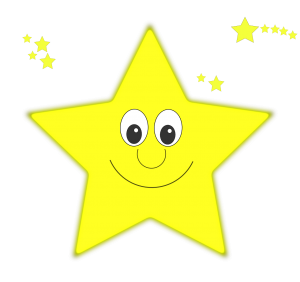
What is the History of “The Star” poem?
Twinkle twinkle little star song is a popular nursery rhyme is known all across England, Australia, Europe and the United States. The star poem was written in the early nineteenth century by Jane Taylor and her sister Ann. The poem saw publication in 1806. The music that this star poem is sung to was created in 1761. This is an extremely popular nursery rhyme that is typically sung to children from birth through kindergarten. Many preschools teach this rhyme along with mary had a little lamb, baa baa black sheep, london bridge and the wheels on the bus. Preschool aged children learn from nursery rhymes in many ways.
How do children benefit from nursery rhymes?
Nursery rhymes are important to preschool aged children in many ways. Introduction of rhymes that are repetitive are easy for children to remember. Nursery rhymes that incorporate music create a catchy beat for children and can inspire a deep love for music. Nursery rhymes are educational and typically teach a lesson to help children throughout early learning. In the star poem many children will begin to ponder about where the stars are located and space. Children will question the world and the star being up so high and that it shines like a diamond. This teaches the qualities of depth and color as well as space and distance. Education becomes easier for children to comprehend when facts and references are catchy and easy to remember.
What ages utilize nursery rhymes?
It is proven that children in all stages of early developement can acquire benefitial knowledge from nursery rhymes in various ways. The repetitive nature and soothing music can be calming to babies. Play groups that sing and interact with babies from six months of age to the early toddler years often focus on these fun nursery rhymes. Toddlers who are just starting to learn about shapes and motions can also benefit from hearing these songs. Introduction to colors, numbers, shapes and sounds can all be extremely beneficial prior to kindergarten. Early school aged children often play and learn together and can inspire their classmates through fun mother goose nursery rhymes.
Where can children learn nursery rhymes?
Many parents grew up listening to nursery rhymes and can pass them down to their children. Adults who are not familiar with many of the popular mother goose nursery rhymes can find books at the local library, free videos and apps on smart devices and many local youth programs also feature these rhymes. Teachers and youth groups can be a wonderful resource for acquiring fun and easy to remember nursery rhymes. Children often learn rhymes quickly and are eager to learn new ones. Practicing the education rhymes will help children make educational connections earlier in their school years.